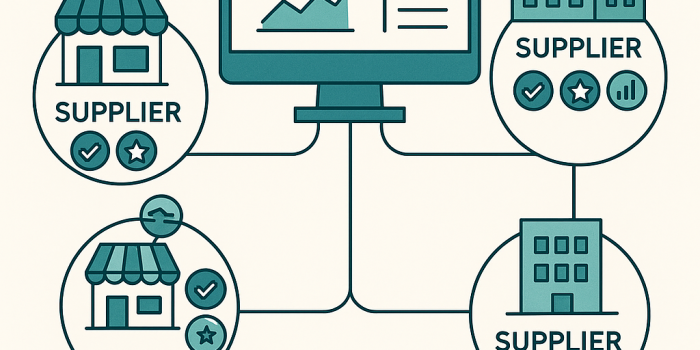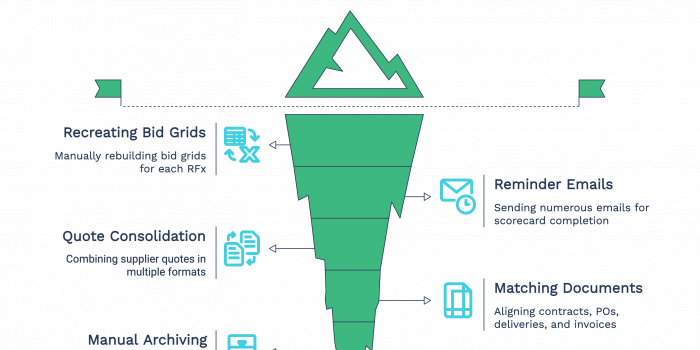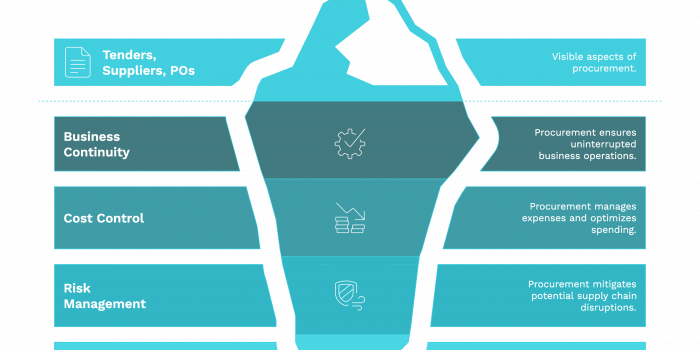Breaking The Cycle: How to Welcome New Suppliers
Welcome new suppliers is a golden rule for resilient supply chains—yet hesitation stalls boardrooms and procurement talks. Why? Because onboarding new vendors feels less like a strategic upgrade and more like stepping into a minefield: untested partnerships, logistical headaches, and the gnawing fear of chaos. So, procurement teams cling

Welcome new suppliers is a golden rule for resilient supply chains—yet hesitation stalls boardrooms and procurement talks. Why? Because onboarding new vendors feels less like a strategic upgrade and more like stepping into a minefield: untested partnerships, logistical headaches, and the gnawing fear of chaos. So, procurement teams cling to the “devil they know,” prioritizing the smooth hum of familiar suppliers over the messy promise of innovation. But here’s the kicker: while predictability feels safe, it’s a gamble in disguise. What opportunities wither when loyalty to legacy partners blindsides agility? What unseen vulnerabilities fester beneath the comfort of routine? The real cost of inertia might just outweigh the risk of change.
The Hidden Risks of Supplier Monoculture in Procurement
Consider the case of KFC’s 2018 crisis in the UK. A routine logistics transition turned into a nationwide disaster when KFC replaced its long-standing distributor, Bidvest, with DHL—an operator ill-equipped to handle high-volume, time-sensitive food distribution. The result? A massive supply chain breakdown that forced over 700 locations to shut their doors, leading to millions in lost revenue and significant reputational damage. The critical misstep? KFC had consolidated its distribution without contingency plans or a diversified supplier base.
Why Vendor Diversification Powers Supply Chain Strength
Diversification isn’t a “nice-to-have” backup plan; it’s the backbone of survival. It’s about more than dodging disasters—it’s about building a supply chain that bends, not breaks. A diverse supplier base means resilience when shocks hit, flexibility when markets shift, and a shot at innovation when competitors stagnate. In a volatile world, it’s not just risk management—it’s a strategic edge.
So, how do you shake off the single-supplier blues and build a network that’s ready for anything? This article unpacks practical strategies to attract and integrate new vendors, sidestepping costly missteps with a dynamic network built for tomorrow. It’s not about reinventing the wheel—it’s about practical moves that open the door to new vendors without sparking chaos.
Simplify Procurement for Diversity
Diversification doesn’t thrive in a bureaucratic swamp. To attract new vendors, strip away the obstacles that scare them off. Start with tender documents in plain English—cut the jargon so bidders focus on solutions, not translation. Offer pre-bid sessions to answer questions upfront, and post the recordings online for fairness. Then, ditch the paper chase with Scale’s user-friendly digital submission system. These aren’t just time-savers—they’re invitations to suppliers who’d otherwise walk away. When procurement’s accessible, your network grows stronger, not just bigger.
Leverage Technology with Scale
Leading digital procurement platform, Scale transforms sourcing by centralizing suppliers in one seamless hub. Buyers gain instant access to a diverse, competitive vendor pool, simplifying discovery, vetting, and onboarding.
Traditional procurement favors familiar suppliers, limiting innovation. Scale removes these barriers, spotlighting high-potential vendors—including underrepresented businesses—and ensuring fair access. With real-time insights, competitive pricing, and enhanced agility, Scale drives smarter, more efficient procurement decisions.
Break Financial Barriers
Safaricom’s tearing down financial walls for small suppliers in a way that’s pretty inspiring. They’ve teamed up with eight banks through Memoranda of Understanding, unlocking a jaw-dropping KSh 85.7 billion in supplier financing by 2024—that’s a KSh 79 billion jump from the year before. Here’s the magic: they tie loans to purchase orders, so underserved groups like women, youth, and Persons with Disabilities get cash fast to deliver without scraping by. It’s not just a lifeline—it’s a launchpad, helping these suppliers grow while leveling the playing field. Across their whole network, supplier financing ticked up by KSh 5.7 million too, showing they’re not leaving anyone out. This isn’t just about money—it’s about giving overlooked entrepreneurs a real shot to thrive in Kenya’s digital economy. (Straight from their 2024 Sustainability Report—dig in here: Safaricom 2024 Sustainability Report).
Newcomer-Friendly Opportunities: Springboard for Starters
Why box out new vendors? Build contracts that beckon them in. Reserve 10% of annual deals for SMEs or fresh faces, cracking the vault to untried talent. Slice sprawling projects into neat $10k parcels—light lifts with big potential. Then set a ladder: nail a small win, climb to tougher gigs. It’s not a handout—it’s a spark. Buyers net a deeper, driven supplier roster; newcomers grab their chance to deliver. Diversification ignites here—smart, scrappy, and built to last.
Reverse Auctions for Procurement: Cost Savings & Supplier Inclusion
Reverse auctions don’t just drive costs down—they level the playing field. By shifting the focus to competitive, real-time bidding, they remove traditional barriers that often favor long-established suppliers. New and underrepresented vendors get direct access to procurement opportunities without lengthy negotiations or legacy biases. For procuring entities, this means tapping into a fresh pool of capable suppliers, fostering innovation, and ensuring fair market pricing. When done right, reverse auctions become a powerful tool for supplier diversification and strategic cost savings.
In a world where supply chains face relentless disruption, clinging to the comfort of familiar suppliers isn’t just a missed opportunity—it’s a ticking time bomb. The KFC debacle of 2018 laid bare the fragility of over-reliance on a single partner, while trailblazers like Safaricom show how breaking barriers can unleash a wave of untapped potential. Diversification isn’t a luxury; it’s the lifeblood of a resilient, future-ready network. By simplifying procurement, leveraging tools like Scale, and opening doors to newcomers through smart contracts and reverse auctions, businesses can transform risk into strength. The choice is stark: stay rooted in the past and court collapse, or embrace the messy, vital promise of change and build a supply chain that doesn’t just survive—it thrives.








